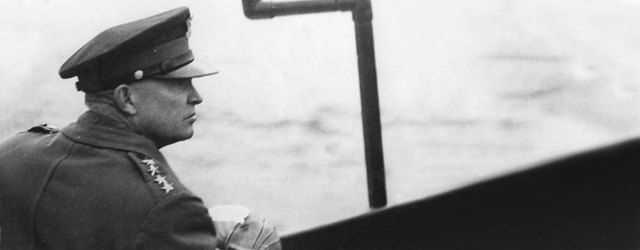General Dwight D. Eisenhower gazes toward the Norman coast the day after D-Day.
The final countdown to the D-Day landings at Normandy began on June 2, 1944, when General Dwight D. Eisenhower moved from his London headquarters to a sprawling Regency mansion known as Southwick House on England’s southern coast. Anyone else would have immediately taken up residence inside the palatial home. But Eisenhower eschewed comfort for a Spartan existence, living instead in a cramped, unpretentious trailer he dubbed “my circus wagon.” Parked under camouflage netting on Southwick’s grounds, the caravan lacked heat except in the tiny bedroom, adorned only with a jumbled pile of Western novels and photos of his wife and son.
That setting soon became the scene of the most trying hours of Eisenhower’s life. Ike had come to Southwick to oversee the mounting of the largest amphibious invasion ever undertaken. The logistics alone that mission planners had grappled with in the months leading up to D-Day were of a scale unprecedented in human history. The planning involved every single military element: the air, sea, and ground forces of many nationalities—American, British, Canadian, Polish, and Free French. But now, in those early days of June, the one variable planners couldn’t control—the weather—was casting doubt on the entire operation…
Read the rest of the story in D-Day: This Great and Noble Undertaking, World History Group’s latest special publication from the editors of World War II magazine. For a preview of its 70th anniversary coverage, see the Table of Contents. Click here to order online, or call 1-800-358-6327.





